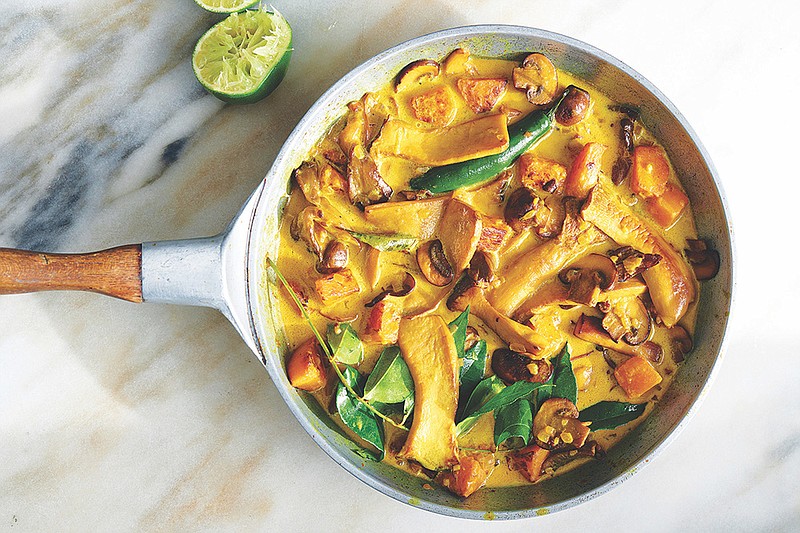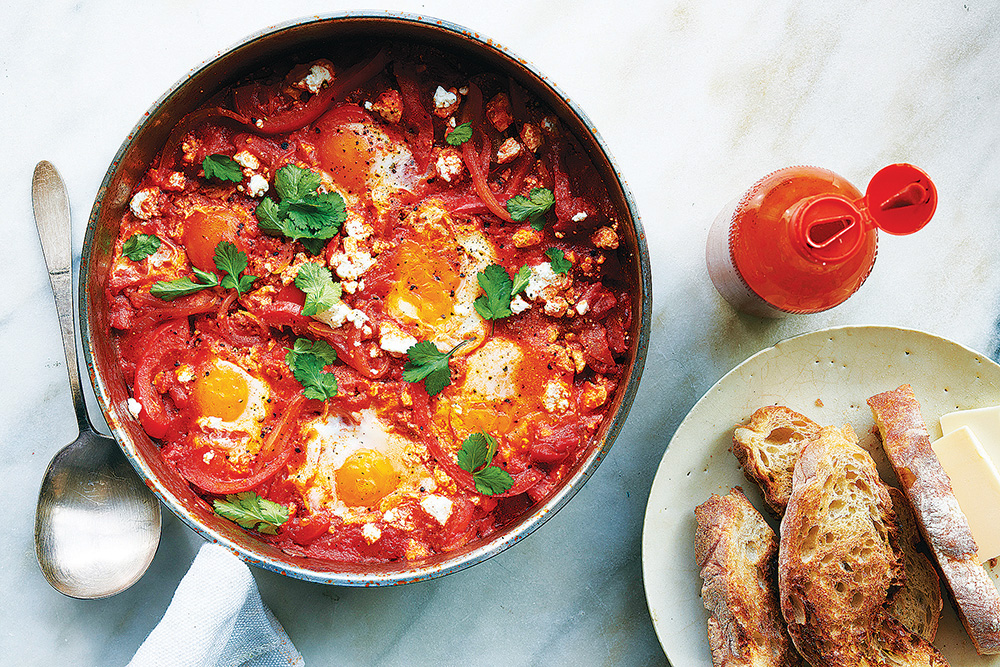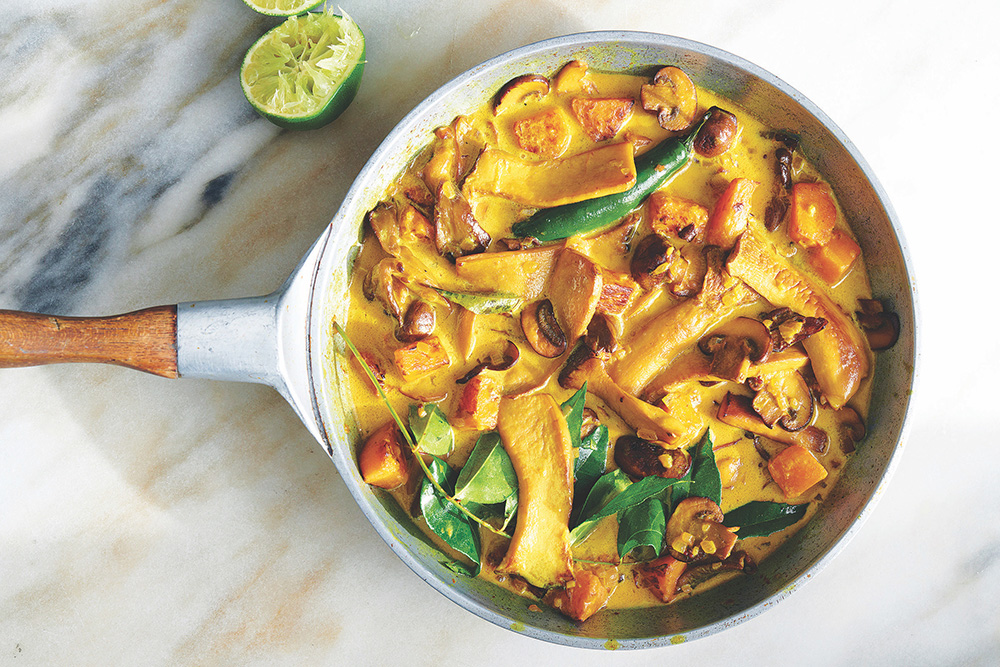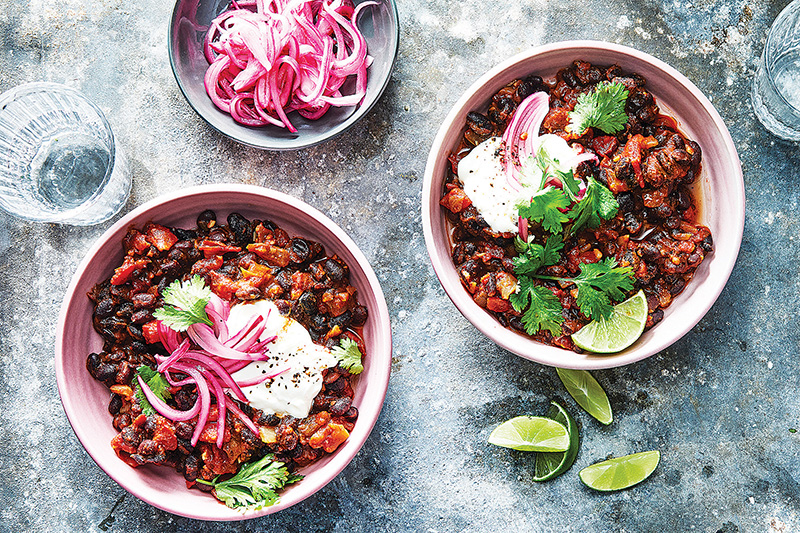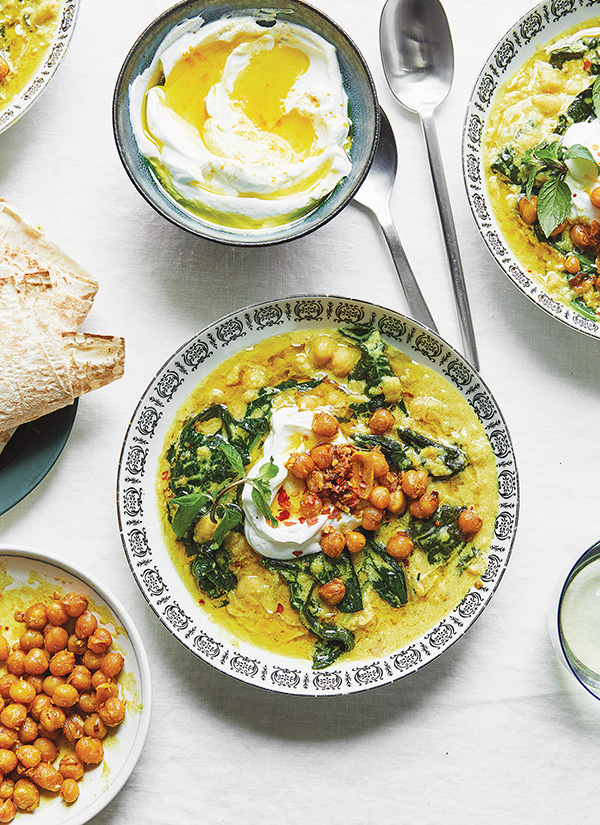Editor's note: This is the last in a five-part series of main-dish meals that can be cooked in a single pot, pan or skillet.
Whether you like cooking, love it or are indifferent to the task, most of us can agree that washing a lot of pots and pans after dinner is a drag. Wouldn't it instead be easier if there were really only one? One skillet or one Dutch oven, one sheet pan, one pot? Wouldn't that be great?
Imagine the ease of it, to come home from work and turn on the oven, line a sheet pan with foil or parchment, tip onto it some vegetables, some protein, some aromatics and sauce: Dinner, nothing else required!
That's why the editors of NYT Cooking have put together this modest (and beautiful), wide-ranging (and tightly focused) collection of recipes devoted to the celebration of one-vessel cooking, on the stovetop and in the oven.
They come from the stars of our universe: Melissa Clark, Alison Roman, Julia Moskin, Ali Slagle, David Tanis, Tejal Rao, Yewande Komolafe, Colu Henry, Joan Nathan, Kay Chun - even me!
The majority will deliver a whole meal in a single pot, pan or skillet, full stop. For others, you'll need to add only a vegetable or starchy side dish if you desire one, a salad, a basket of bread. There are vegetarian situations, and vegan ones too, lots of fish, plenty of chicken, plenty of stew.
The only constant among them is our desire to make cooking easier (and wildly delicious) and to deliver you from the sadness of a sink filled with dishes.
The series
› Feb. 25: Pastas› March 3: Chicken› March 10: Beef and pork› March 17: Seafood› March 24: Vegetables
Shakshuka With Feta
Shakshuka, a vibrant dish of eggs baked in a tomato-red pepper sauce spiced with cumin, paprika and cayenne, may be at the apex of eggs-for-dinner recipes. In Israel, it is breakfast food, a bright, spicy start to the day with a pile of pita or challah served on the side, but it's also excellent for brunch or lunch. For Melissa Clark's recipe, you make the sauce first, on the stovetop, then gently crack each of the eggs into the pan, nestling them into the sauce, before sliding the pan into the oven. Don't skip the crumbled feta here: It softens into creamy nuggets in the oven's heat.
Yield: 4 to 6 servings
Total time: 50 minutes
3 tablespoons extra-virgin olive oil
1 large onion, halved and thinly sliced
1 large red bell pepper, seeded and thinly sliced
3 garlic cloves, thinly sliced
1 teaspoon ground cumin
1 teaspoon sweet paprika
1/8 teaspoon ground cayenne, or to taste
1 (28-ounce) can whole plum tomatoes with their juices, coarsely chopped
3/4 teaspoon kosher salt, plus more as needed
1/4 teaspoon black pepper, plus more as needed
5 ounces feta, crumbled (about 1 1/4 cups)
6 large eggs
Chopped cilantro, for serving
Hot sauce, for serving
Heat oven to 375 degrees. Heat oil in a large skillet over medium-low. Add onion and bell pepper. Cook gently until very soft, about 20 minutes. Add garlic, and cook until tender, 1 to 2 minutes; stir in cumin, paprika and cayenne, and cook 1 minute. Pour in tomatoes, and season with 3/4 teaspoon salt and 1/4 teaspoon pepper; simmer until tomatoes have thickened, about 10 minutes. Taste, and add more salt and pepper if needed. Stir in crumbled feta.
Gently crack eggs into skillet over tomatoes. Season eggs with salt and pepper. Transfer skillet to oven, and bake until eggs are just set, 7 to 10 minutes. Sprinkle with cilantro, and serve with hot sauce.
Tips:
* Shakshuka originated in North Africa, and there are as many versions of it there and elsewhere as there are cooks who have embraced it.
* You can make shakshuka in a cast-iron pan if the metal is very well seasoned. If it's not, the iron will impart an unwelcome tang, so use an enameled pot instead.
Winter Squash and Wild Mushroom Curry
This is comfort food, Indian-style, adapted by David Tanis from a recipe by Madhur Jaffrey. It is also vegan, and perfect for any crisp evening. Use a mixture of cultivated mushrooms, which come in all shapes and sizes, as well as some wild mushrooms, if you can, like golden chanterelles, lobster or hen of the woods. You can make the dish as spicy as you wish, but be sure to include some cayenne and green chile, to complement and play off the creamy coconut milk sauce.
Time: 30 minutes
Yield: 4 to 6 servings
3 tablespoons vegetable oil
10 ounces butternut or other winter squash, peeled and cut into -inch pieces
Kosher salt and black pepper
1 or 2 small green chiles, such as jalapeño or serrano
3 medium shallots or 1 small onion, finely diced
1/2 teaspoon black mustard seeds
1/2 teaspoon cumin seeds
Handful of fresh or frozen curry leaves (optional)
2 garlic cloves, minced
1 teaspoon ground coriander
Pinch of ground cayenne
1/2 teaspoon ground turmeric
1 pound mushrooms, preferably a mix of cultivated and wild, trimmed and sliced 1/8-inch thick
3/4 cup coconut milk
2 tablespoons lime juice
Cilantro sprigs, for garnish
In a wide skillet, heat oil over medium-high. When hot, add squash cubes in one layer. Season with salt and pepper. Cook for about 2 minutes, letting cubes brown slightly, then flip and cook for 2 minutes more. Use a slotted spoon to lift squash out, and set aside.
Cut a lengthwise slit in each chile to open it, but leave whole. (This helps the chilies heat the sauce without making it too spicy.)
Add shallots, salt lightly and cook, stirring, 1 minute. Add mustard seeds, cumin seeds and curry leaves, if using, and let sizzle for 30 seconds, then add garlic, coriander, cayenne, turmeric and chilies. Stir well, and cook for 30 seconds more.
Add mushrooms, season with salt and toss to coat. Cook, stirring, until mushrooms begin to soften, about 5 minutes.
Return squash cubes to skillet, stir in coconut milk and bring to a simmer. Lower heat to medium, and simmer for another 5 minutes. If mixture looks dry, thin with a little water. Taste, and season with salt.
Before serving, stir in lime juice. Transfer to a serving dish, and garnish with cilantro.
Tips:
* Serve with basmati rice, but rice noodles or mashed potatoes would be pretty keen as well.
* Curry leaves are increasingly easy to find, in real life as on the internet. But you might substitute the zest of one lime and a handful of basil leaves.
Vegetarian Skillet Chili
If you keep canned beans, tomatoes, onion and garlic in your pantry, you can make this Melissa Clark recipe on any weeknight without having to shop. The pickled onions aren't strictly necessary, but they add a welcome tangy contrast to the beans. If you have a bell pepper or a jalapeño or two, chop them up and sauté them with the onions. And if you want to be fancy, grate the zest off the lime before juicing for the pickles, and stir it into the sour cream.
Time: 30 minutes
Yield: 4 servings
For the Pickled Onions:
1 lime
1 red onion or shallot, thinly sliced
Large pinch of kosher salt
Small pinch of granulated sugar
For the Chili:
Olive or grapeseed oil
1 large onion, chopped
3 garlic cloves, or to taste, minced
1 teaspoon chile powder, plus more to taste
1 teaspoon dried oregano, plus more to taste
2 (15-ounce) cans black beans, drained
1 (15-ounce) can diced tomatoes with their juices
Kosher salt
Fresh cilantro, diced avocado and sour cream, for garnish (optional)
Make the pickled onions: Squeeze lime juice into a bowl, and add onion, salt and sugar. Let rest while you make the chili.
Prepare the chili: Heat a large skillet over medium-high. Add the oil. When hot, add onion and sauté until softened, 5 to 7 minutes. Add garlic, chile powder and oregano, and sauté until fragrant, 1 to 2 minutes longer. Add beans and tomatoes and a few large pinches of salt, and let simmer until the tomatoes break down, about 20 minutes.
Taste, and add more salt, chile powder and/or oregano to taste. Serve with the pickled onions and any of the garnishes you like.
Tips:
* Don't want to make pickled onions? Use jarred, sliced pickled jalapeños or banana peppers instead.
* Adding a chopped canned chipotle in adobo to the onions lends a deliciously smoky and fiery note to the dish.
Spiced Chickpea Stew With Coconut and Turmeric
This is #thestew, Alison Roman's internet-famous recipe, as delicious as it is beautiful. Spiced chickpeas are crisped in olive oil, then simmered in a garlicky coconut milk for an incredibly creamy, basically-good-for-you dinner that evokes South Indian chickpea stews and some stews found in parts of the Caribbean. While the chickpeas alone would be good as a side dish, they are further simmered with stock, bolstered with dark, leafy greens of your choosing and finished with a handful of fresh mint.
Time: 55 minutes
Yield: 4 to 6 servings
1/4 cup olive oil, plus more for serving
4 garlic cloves, chopped
1 large yellow onion, chopped
1 (2-inch) piece ginger, finely chopped
Kosher salt and black pepper
1 1/2 teaspoons ground turmeric, plus more for serving
1 teaspoon red-pepper flakes, plus more for serving
2 (15-ounce) cans chickpeas, drained and rinsed
2 (15-ounce) cans full-fat coconut milk
2 cups vegetable or chicken stock
1 bunch Swiss chard, kale or collard greens, stems removed, torn into bite-size pieces
1 cup mint leaves, for serving
Yogurt, for serving (optional)
Toasted pita, lavash or other flatbread, for serving (optional)
Heat 1/4 cup oil in a large pot over medium. Add garlic, onion and ginger. Season with salt and pepper, and cook, stirring occasionally until onion is translucent and starts to brown a little at the edges, 3 to 5 minutes.
Add 1 1/2 teaspoons turmeric, 1 teaspoon red-pepper flakes and the chickpeas, and season with salt and pepper. Cook, stirring frequently, so the chickpeas sizzle and fry a bit in the spices and oil, until they've started to break down and get a little browned and crisp, 8 to 10 minutes. Remove about a cup of chickpeas, and set aside for garnish.
Using a wooden spoon or spatula, further crush the remaining chickpeas slightly to release their starchy insides. (This will help thicken the stew.) Add coconut milk and stock, and season with salt and pepper.
Bring to a simmer, scraping up any bits that have formed on the bottom of the pot. Cook, stirring occasionally, until stew has thickened, 30 to 35 minutes. (Taste a chickpea or two, not just the liquid, to make sure they have simmered long enough to be as delicious as possible.) If after 30 to 35 minutes, you want the stew a bit thicker, keep simmering until you've reached your desired consistency. Determining perfect stew thickness is a personal journey!
Add greens, and stir, making sure they're submerged in the liquid. Cook until they wilt and soften, 3 to 7 minutes, depending on what you're using. (Swiss chard and spinach will wilt and soften much faster than kale or collard greens.) Season again with salt and pepper.
Divide among bowls, and top with mint, reserved chickpeas, a sprinkle of red-pepper flakes and a good drizzle of olive oil. Serve alongside yogurt and toasted pita if using; dust the yogurt with turmeric if you'd like.
Tips:
* When shopping, be sure to avoid low-fat coconut milk, coconut milk meant for drinking or cream of coconut. None are suitable here.w
* Two cans of coconut milk, really? Yes. More cowbell.
Sam Sifton is the founding editor of NYT Cooking for The New York Times.
